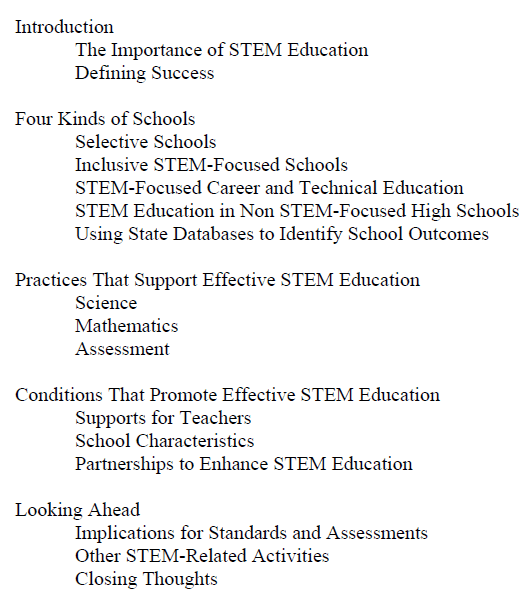
|
|
|
|
|
|
|
News & Views item - August 2011 |
Credit: Google

I have discovered a truly marvellous proof of this,
which this margin is too narrow to contain.
Pierre de Fermat
![]() Successful STEM Education: A Workshop Summary. (August 17, 2011)
Successful STEM Education: A Workshop Summary. (August 17, 2011)
The US National Academy of Sciences has released an "Advance Copy" of the report of the WORKSHOP ON SUCCESSFUL STEM EDUCATION IN K-12 SCHOOLS which ran from May 10 to 12, 2011 in Washington DC.
The 100-pqge PDF file is available for free download from The National Academies Press.
What students learn about the science disciplines, technology, engineering,
and mathematics during their K-12 schooling shapes their intellectual
development, opportunities for future study and work, and choices of career, as
well as their capacity to make informed decisions about political and civic
issues and about their own lives. Most people share the vision that a highly
capable STEM workforce and a population that understands and supports the
scientific enterprise are key to the future place of the United States in global
economics and politics and to the well-being of the nation. Indeed, the
solutions to some of the most daunting problems facing the nation will require
not only the expertise of top STEM professionals but also the wisdom and
understanding of its citizens.
Although much is known about why schools may not succeed, it is far less clear
what makes STEM education effective. Successful STEM Education: A Workshop
Summary discusses the importance of STEM education. The report describes the
primary types of K-12 schools and programs that can support successful education
in the STEM disciplines and examines data and research that demonstrate the
effectiveness of these school types. It also summarizes research that helps to
identify both the elements that make such programs effective and what is needed
to implement these elements.
The subjects dealt with by the workshop participants are list below:

Those who had hoped for the delivery of a panacea for successful STEM education in K-12 schools by the workshop would have gone away disappointed.
With regard to the broad question of what makes STEM education effective,
Adam Gamoran, [from the Department of Sociology and Wisconsin Center for
Research Education Research, University of Wisconsin-Madison and chair of the
workshop] observed that definitive answers are simply not on the horizon in
the short term. There is promising research in progress that can provide some
help to policy makers and school leaders, and other studies will eventually
yield findings about the efficacy of different school models and the different
approaches taken under each of the different models. Yet neither the research
findings that are available now nor even the findings that will be available
when the research now under way is complete will support general conclusions
about the efficacy of different school models. There will still be gaps in the
knowledge base.
One possible reason for that is the significant diversity in STEM education,
even within each of the basic school types. Effective schools appear to share
fundamental goals—such as seeking ways to “transcend the tedium” that is all too
often a part of STEM education—but there are many differences among them. It
does seem clear, he suggested, that the context in which schools are operating
matters. In a practical sense, that context determines the resources that are
available to support the school, such as universities, research organizations,
or businesses, that can provide direct support and experience for STEM students.
And the context influences the policies that shape the school, such as district
rules that do or do not allow school leaders and teachers the flexibility they
believe they need to be effective.
Teachers matter greatly to schools’ outcomes, Gamoran added, particularly their
content knowledge. Other discussions highlighted the vital importance of
curriculum—particularly curricular focus—as well as a variety of ways of
thinking about curriculum and instruction. He mentioned two views: some argue
for tight coherence and consistency of the curriculum, while others emphasize
the importance of monitoring students’ learning as they develop understanding in
a particular domain.
The workshop also revealed several areas where more work is needed, Gamoran
observed. Much of the discussion of school types focused on high schools, for
example, although grades K-8 are also very important. There was more attention
to mathematics and science than to engineering and technology education. These
are imbalances that reflect the literature, and they may also reflect the
emphasis of current accountability policies. The T in STEM has always been easy
to overlook, one participant observed, because it is difficult to define. Is it
educational technology? Is it technology as a result of engineering? Technology
has not been well incorporated into science standards, and although there are
separate standards for it, its place has not been clearly established.
Each of these points suggests fruitful areas for further research and analysis,
but committee members ended the workshop with an appreciation for the many
creative schools, educators, and others who are already hard at work preparing
the next generation of STEM students and workers.